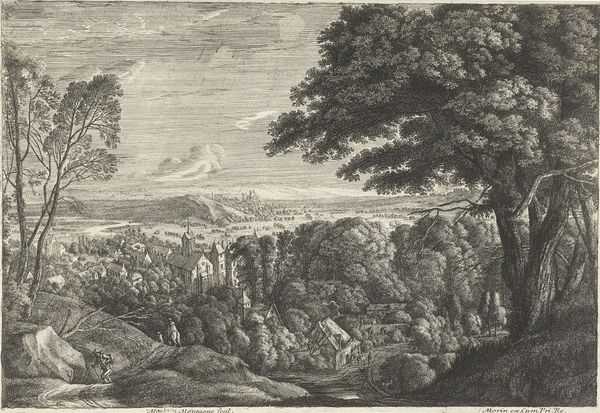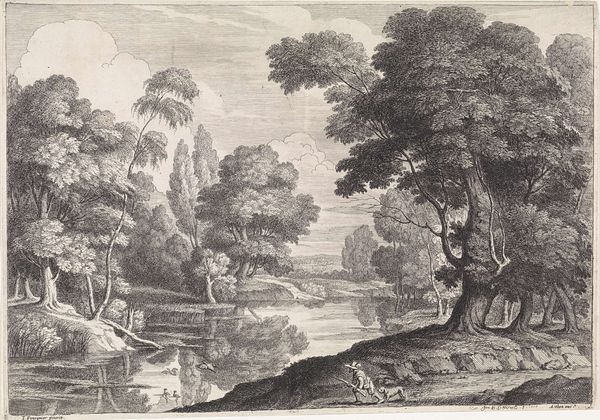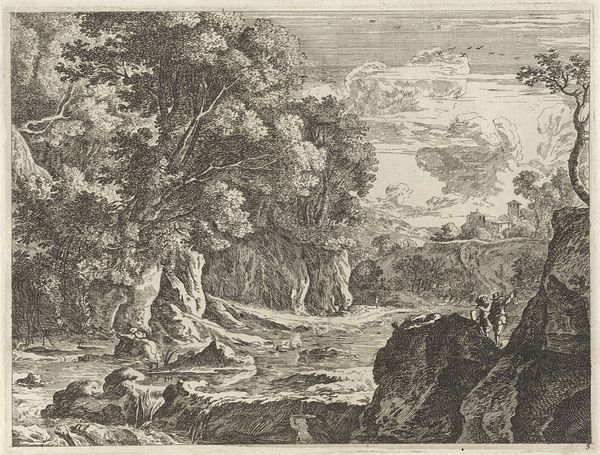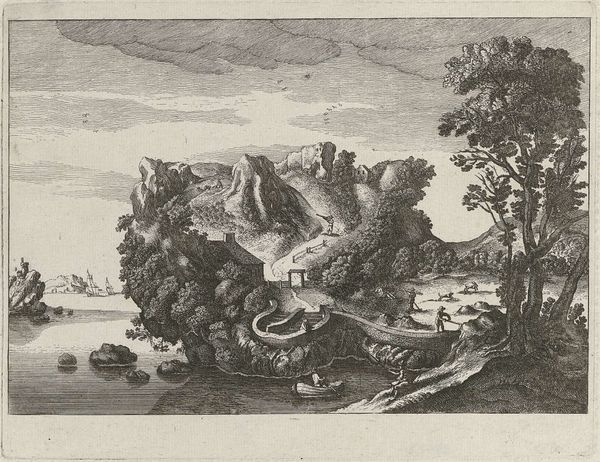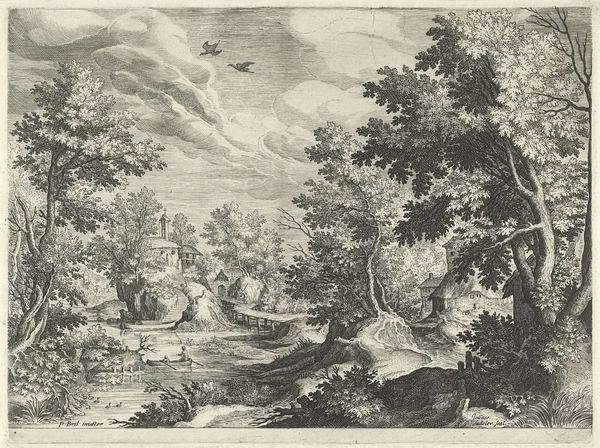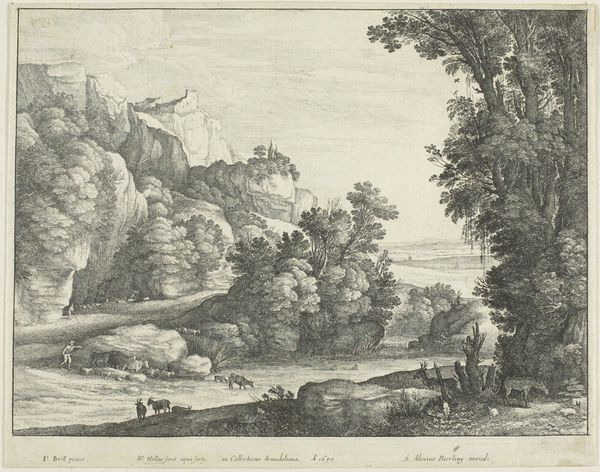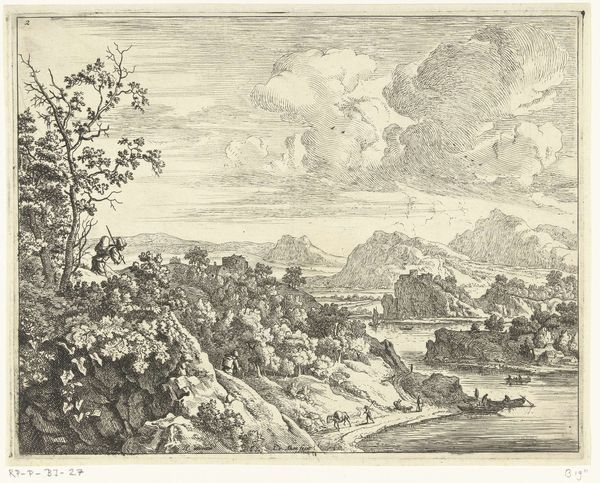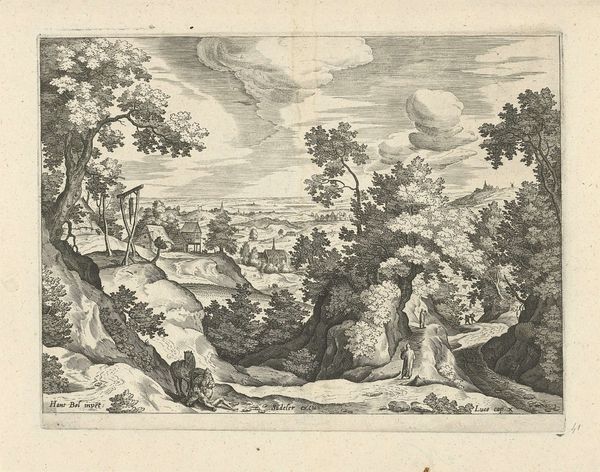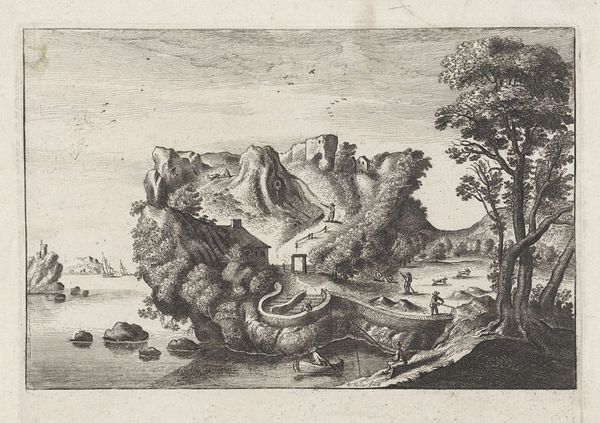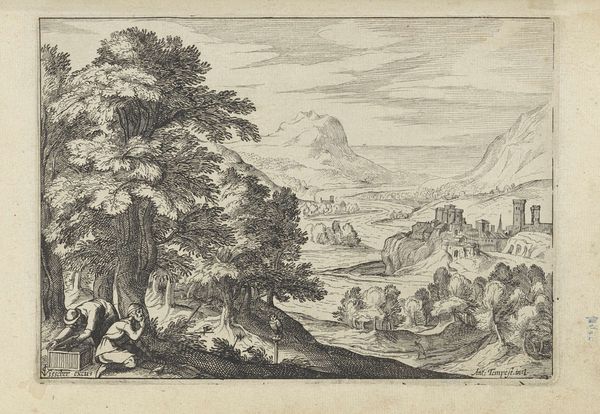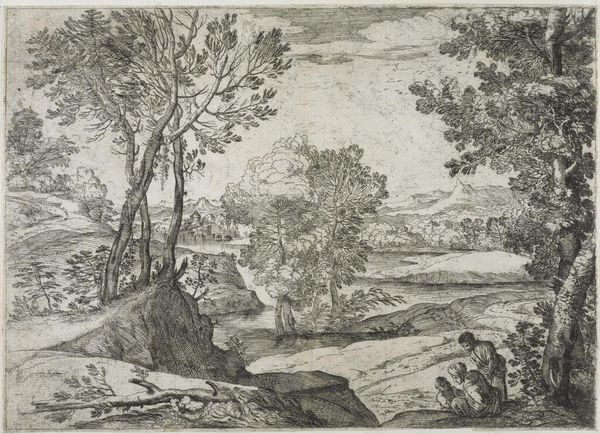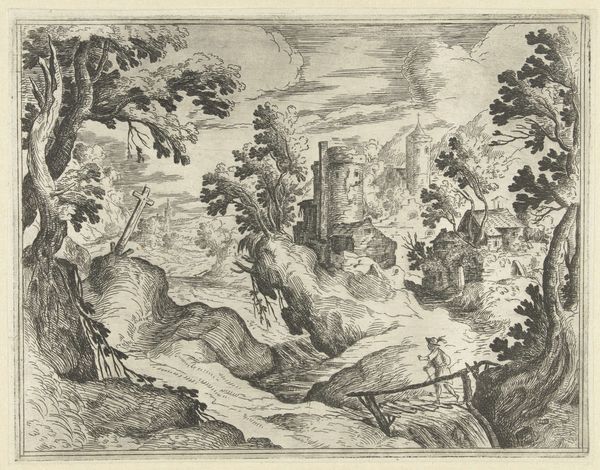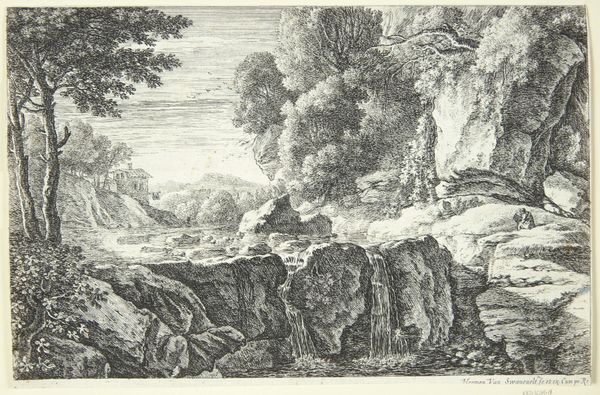
etching
#
etching
#
landscape
#
river
#
etching
#
mannerism
#
forest
#
northern-renaissance
Dimensions: height 204 mm, width 275 mm
Copyright: Rijks Museum: Open Domain
Editor: So, here we have Johann Sadeler's "River Landscape with a Castle", an etching from somewhere around 1595 to 1600, here at the Rijksmuseum. I’m struck by the sheer density of the detail, the labor involved in creating this kind of precise scene. What’s your take on it? Curator: Looking at it from a materialist perspective, consider the copper plate itself, mined and processed. Etching, a relatively new printmaking technique at the time, was heavily reliant on access to specific acids and the skills of metalworkers. Sadeler’s choice to depict this idyllic landscape becomes more than just aesthetic; it’s intertwined with early capitalist structures of mining and trade. Editor: So, the very process and materials speak to the social and economic factors of the time. How does the imagery tie into this? Curator: Think about who could afford to own a print like this. Not the miners, certainly! This landscape idealizes nature, almost fetishizes it. But that idealization relies on the exploitation of actual landscapes for resources, for copper, for paper. What does it mean to create an image of serenity derived from the earth and from labor, and then sell that image? Editor: So, you’re saying it's not just about appreciating a pretty landscape. Curator: Precisely. It’s about recognizing that artistic production is embedded within, and often obscures, the material conditions that make it possible. The artist uses material, skills, and the etching medium to produce an artifact ready for trade and consumption in early modern Europe. Editor: That definitely gives me a new way to see the art, thank you. Curator: My pleasure; it has been insightful.
Comments
No comments
Be the first to comment and join the conversation on the ultimate creative platform.
